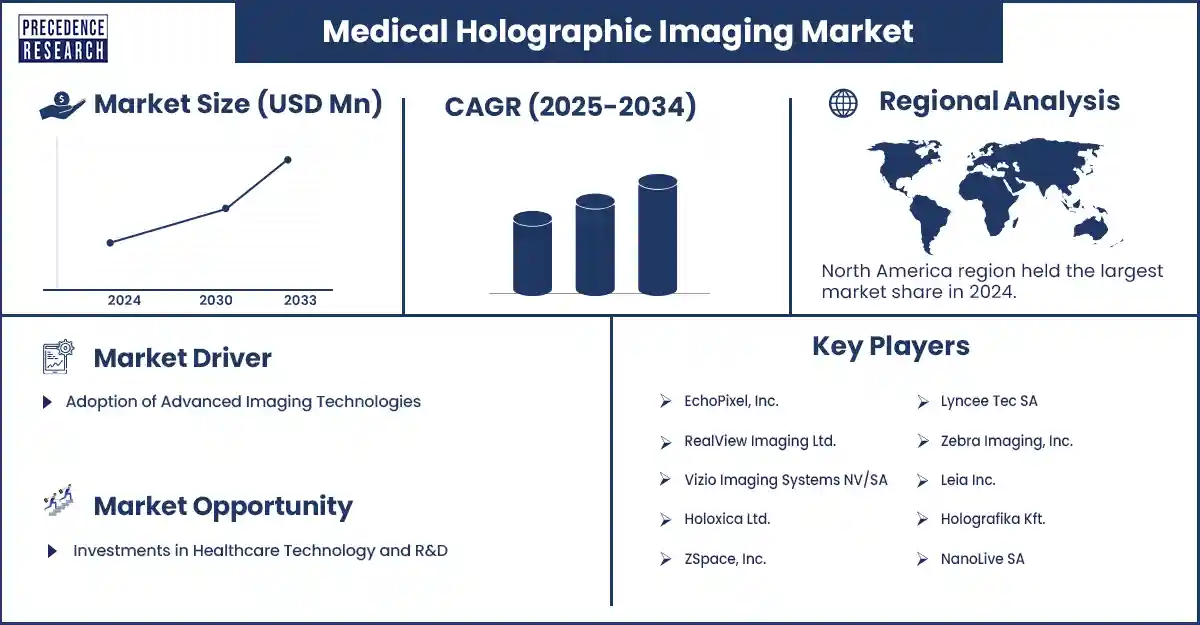November 2025
The medical holographic imaging market is gaining momentum as hospitals, research institutes, and educators embrace advanced 3D visualization for diagnostics, surgical planning, and immersive training. Driven by rising demand for non-invasive imaging, technological breakthroughs in optics and graphics, and growing adoption in precision medicine, the market is set to expand rapidly over the coming decade. The growth of the medical holographic imaging market is driven by surging demand for advanced, non-invasive 3D visualization devices in diagnostics, surgical planning, and education.

Holographic imaging in hospitals is used for advanced medical visualization, including 3D visualization of anatomy for surgical planning, real-time guidance during complex procedures, and facilitating remote consultations through immersive telemedicine. Holographic imaging, which utilizes precise control of light patterns, creates high-resolution images, representing a new approach for endoscopy and microscopy. The rising demand from clinicians for improved spatial representation in minimally invasive surgeries and precision medicine is driving the growth of the medical holographic imaging market.
Advancements in computational methods, optics, and graphics processing enable the creation of accurate, real-time, high-resolution holographic renderings at reduced costs. Furthermore, the growing use of holographic imaging in education and training contributes to market growth.
North America, particularly the U.S., sustains its dominance in the medical holographic imaging market. This is due to substantial R&D investments, high spending on healthcare IT, and the early adoption of new imaging methods. The presence of major technology and healthcare companies facilitates the commercialization of advanced imaging, including holographic imaging, and favorable reimbursement structures also contributed to the region’s dominant position in the market.
Asia Pacific is emerging as the fastest-growing market, with countries such as China, India, Japan, and South Korea expanding their healthcare infrastructure and embracing digitization. Increased medical tourism, government plans to establish smart health and digital hospitals, and recognition of the advantages of 3D imaging are driving up demand for deposition technologies. Increasing healthcare spending in emerging markets, along with government backing for digital health transformations, further supports market growth.
| Report Attribute | Key Statistics |
| Quantitative Units | Revenue in USD million/billion, Volume in units |
| Largest Market | North America |
| Base Year | 2024 |
| Regions Covered | North America, Europe, Asia-Pacific, Latin America, and Middle East & Africa |
Get this report to explore global market size, share, CAGR, and trends, featuring detailed segmental analysis and an insightful competitive landscape overview @ https://www.precedenceresearch.com/sample/6881
You can place an order or ask any questions. Please feel free to contact at sales@precedenceresearch.com |+1 804 441 9344
November 2025
July 2025
July 2025
November 2025